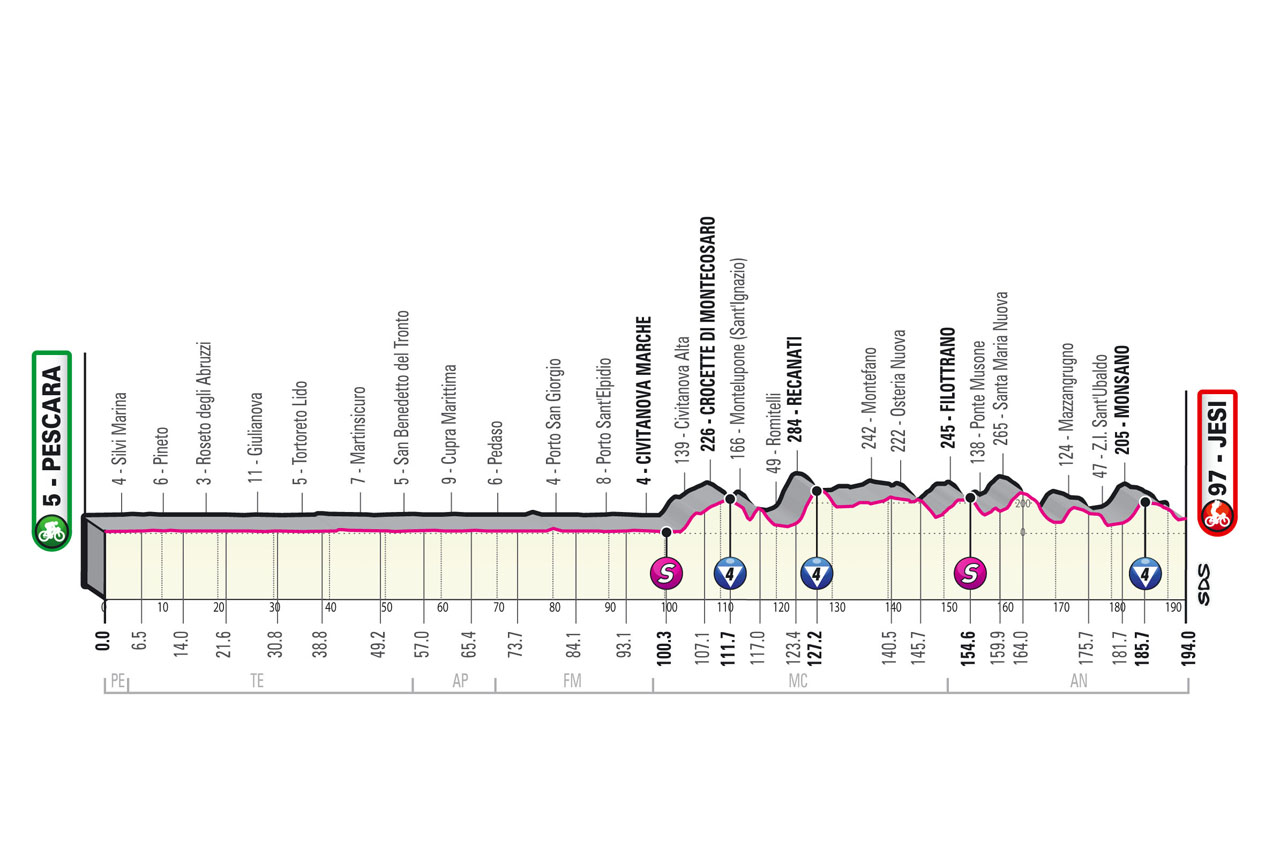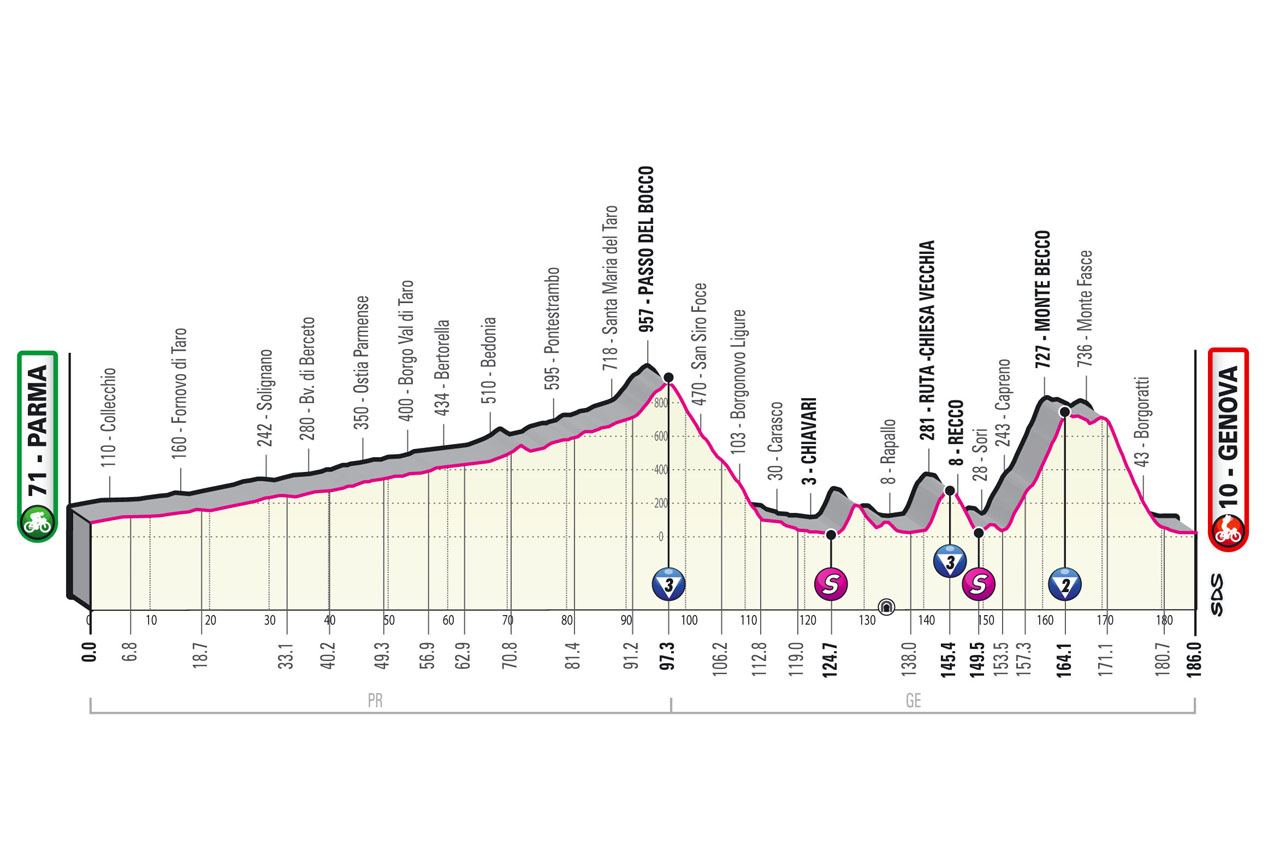Giro d'Italia 2022: Six hilly stages revealed in Naples, Genoa, Turin and Friuli
RCS Sport to present mountain stages on Wednesday and full route on Thursday

Six more stages of the 2022 Giro d’Italia have been unveiled as RCS Sport continues its staggered presentation of next year’s route.
After providing details of the sprint opportunities on Monday, the race organiser outlined six hilly stages on Tuesday, with the high mountains to be revealed on Wednesday and the final stage and full route on Thursday.
As was the case with the sprint stages, RCS Sport has announced details of the hilly stages without specifying precisely where they feature on the route. The full context of this Giro will thus only become clear when the protracted route presentation draws to a close.
On Tuesday, RCS Sport confirmed that Naples will return to the Giro route for the first time since it hosted the Grande Partenza in 2013, while there will also be finishes in Genoa and Turin.
It has already been confirmed that the 2022 Giro will begin in Budapest on May 6, and it will also feature at least two stages in Sicily before reaching the Italian mainland with a flat leg from Palmi to Scalea.
The hilly stage from Diamante to Potenza is thus likely to be stage 7 of the 2022 race. At 198km in length and with some 4490m of climbing, the stage has been given a four-star difficulty rating by RCS Sport. The route snakes through the mountains of Calabria and Basilicata for a stage similar to that won by Filippo Ganna at Camigliatello Silano on the 2020 Giro.
The climbing starts with the category 2 Passo Colla and barely relents thereafter, with the category 1 Monte Sirino, category 2 Monte Scuro and category 3 La Sellata all following ahead of the finale in Potenza, while including a sharp kick into the centre before the drop to the line.
The latest race content, interviews, features, reviews and expert buying guides, direct to your inbox!
Monte Sirino featured as a stage finish on three occasions in the 1990s, with Laudelino Cubino triumphing in 1995 and Davide Rebellin winning a year later before Chepe Gonzalez outfoxed a young Danilo Di Luca in 1999.
The next hilly day comes in the south, probably as soon as stage 8, when the race returns to Naples for the first time in nine years.
The 149km stage starts and finishes in Naples, but it leaves town to take in five laps of a 19km circuit in the volcanic Campi Flegrei to the west of the city, taking in the short but sharp ascent of the Monte di Procida. The race then returns to Naples for the finale, with the stage finish on the seafront at Via Caracciolo, as it was when Mark Cavendish claimed the first maglia rosa of the 2013 Giro.
Early in the second week of the Giro, the race will feature a hilly stage in the Marche from Pescara to Jesi that would not look out of place at Tirreno-Adriatico.
The 194km stage is a day of two halves. After a flat opening gambit along the coast, the terrain becomes rather more rugged when the race hits Civitanova Marche. The category 4 climb to Sant'Ignazio di Montelupone is followed quickly by a similar ascent to Recanati, the birthplace of the poet Giacomo Leopardi.
The road continues to dip and rise thereafter as it passes through the late Michele Scarponi’s homeplace of Filottrano and another category 4 climb at Monsano before the finish in Jesi. As at Tirreno-Adriatico, the unclassified muri around Jesi could prove just as decisive as the categorised climbs.
Later in the second week, the Giro features two more stages for possible escapees, including a stiff 186km leg from Parma to Genoa, which takes in 2840m of climbing.
The road climbs gently throughout the opening half of the stage en route to the Passo del Bocco, where Wouter Weylandt tragically lost his life on the 2011 Giro. After the descent to Chiavari, the route takes in the category 3 Ruta, by way of Chiesa Vecchia, and then the new category 2 ascent of Monte Becca. After the summit, the route takes in a plateau that leads to Monte Fasce before a rapid drop to the finish in Genoa.
Having already confirmed a flat stage to Cuneo, RCS Sport has now outlined a second, hilly stage in Piedmont that will bring the Giro from Santena to Turin, with some 3470m of climbing crammed into just 153km. The stage takes in two a half laps of a circuit that includes the climbs of the Colle della Maddalena, Superga and the Roccia Santa Brigida before a finish on the banks of the Po.
In the third week of the Giro, meanwhile, the race will go to Friuli in the northeast of Italy and take in a medium mountain stage from Marano Lagunare to the Santuario di Castelmonte. The stage climbs the Passo Tanamea and heads briefly into Slovenia, from where the race will ascend the category 1 Monte Kolovrat. The stiff ascent is 10km in length with a gradient touching 10%.
After dropping back into Italy, the stage passes through Cividale del Friuli before the category 2 ascent to the Santuario di Castelmonte that overlooks it. All told, the 178km leg incorporates some 3230m of climbing.







Barry Ryan was Head of Features at Cyclingnews. He has covered professional cycling since 2010, reporting from the Tour de France, Giro d’Italia and events from Argentina to Japan. His writing has appeared in The Independent, Procycling and Cycling Plus. He is the author of The Ascent: Sean Kelly, Stephen Roche and the Rise of Irish Cycling’s Golden Generation, published by Gill Books.